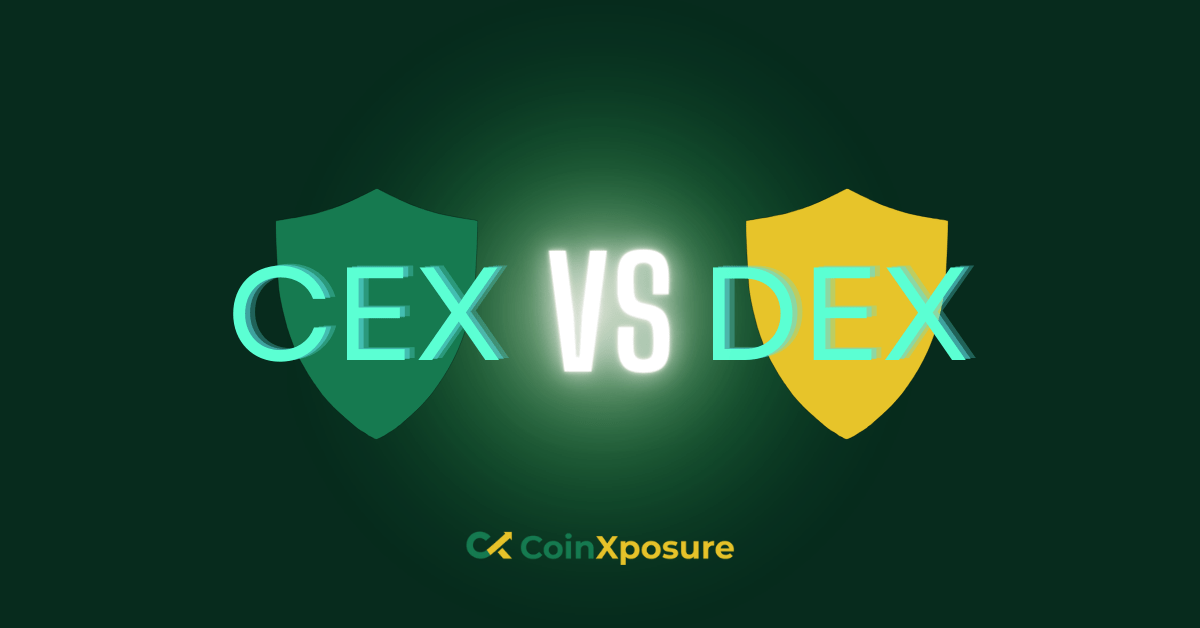This article delves into cryptocurrency exchanges to assist you in making informed decisions within the dynamic realm of digital finance.
We will dissect the disparities between centralized and decentralized platforms, emphasizing their relevance to you and the pivotal role of security.
Grasping the functions of centralized exchanges (CEX) and decentralized counterparts (DEX) will equip you to navigate the evolving terrain and make choices that correspond with your financial inclinations.
Centralized Platforms vs. Decentralized Platforms
Cryptocurrencies have transformed the way we perceive and handle finances. As we wade through the vast ocean of digital assets, the lighthouse guiding us is none other than security. Let’s dissect the realms of centralized exchanges (CEX) and decentralized exchanges (DEX), shedding light on their strengths, weaknesses, and the evolving security paradigm that envelops them.
Centralized Exchanges (CEX)
Centralized exchanges (CEX) serve as bustling marketplaces for cryptocurrency trading, renowned for their unmatched liquidity, attracting traders seeking swift transactions. Their user-friendly interfaces make them accessible to newcomers, offering intuitive navigation and seamless trading experiences.
However, CEX faces a critical flaw in their single point of failure, vulnerable to system-wide disruptions from technical glitches or cyber-attacks.
Security concerns loom large, with hacking incidents raising doubts about the robustness of their security measures, potentially leading to catastrophic consequences for users. Despite these challenges, centralized exchanges like Binance, Coinbase, and Kraken dominate the crypto landscape.
Decentralized Exchanges (DEX)
Decentralized exchanges (DEX) represent a disruptive force in the cryptocurrency realm, operating to eliminate intermediaries and empower users with greater asset control. DEX platforms challenge the centralized system, relying on decentralization, where no central authority holds custody of funds or dictates rules.
Smart contracts facilitate direct peer-to-peer transactions, reducing reliance on intermediaries and enhancing user control by allowing them to maintain ownership of their private keys. Despite these advantages, DEX faces challenges such as liquidity issues and complexity, which may deter newcomers to the crypto space. Notable DEX like Uniswap, SushiSwap, and PancakeSwap exemplify the decentralized ethos embraced by many in the crypto community.
Security Considerations of Exchanges
As we delve deeper into the world of exchanges, the spotlight turns to security, a paramount concern that can make or break the trust users place in these platforms. Thus, the risks of these exchanges must be properly evaluated.
Centralized Exchange Risks
While offering convenience and liquidity, centralized exchanges are not impervious to risks. Picture this: hacking incidents, the proverbial bogeyman of the crypto space. Over the years, we’ve witnessed high-profile breaches that sent shockwaves through the community.
Regulatory concerns also cast a long shadow over centralized exchanges. As governments worldwide grapple with the regulation of cryptocurrencies, exchanges find themselves navigating through a maze of legal frameworks. Compliance becomes a tightrope walk, with the slightest misstep potentially resulting in penalties or even shutdowns.
Decentralized Exchange Risks
Turning our gaze to decentralized exchanges, we encounter different challenges. Smart contracts, the backbone of DEX platforms, introduce a unique vulnerability.
While smart contracts automate and execute transactions without the need for intermediaries, flaws in the code may exist and can also be taken advantage of. Moreover, the decentralized realm’s need for regulatory clarity poses its own risks. As governments play catch-up with the rapid evolution of decentralized finance (DeFi), questions regarding legality, taxation, and investor protection linger in the background. Users navigating this space must do so with a keen awareness of the regulatory ambiguity.
Understanding the risks inherent in centralized and decentralized exchanges is crucial for users seeking to safeguard their assets. It’s a balancing act between the liquidity and accessibility offered by centralized exchanges and the security and control championed by decentralized alternatives.
Regulatory Landscape of Exchanges
The regulatory landscape corresponds to the shifting tides that both centralized and decentralized exchanges must navigate. Understanding the regulatory context is essential for users and exchanges.
Current Regulations for Centralized Exchanges
Centralized exchanges operate within a framework of regulations, albeit one that varies significantly across jurisdictions. Some countries have embraced cryptocurrencies, establishing clear legal guidelines for exchanges. In these regions, centralized exchanges must adhere to anti-money laundering (AML) and know-your-customer (KYC) regulations, fostering a sense of transparency and accountability.
However, not all countries have extended a welcoming hand to cryptocurrencies. Some grapple with the classification of digital assets, resulting in regulatory uncertainty. In such cases, centralized exchanges find themselves in a delicate dance, attempting to comply with evolving regulations while offering services to a global user base.
Evolving Regulations for Decentralized Exchanges
Decentralized exchanges, however, have danced on the fringes of regulatory frameworks. The decentralized nature of these platforms challenges traditional regulatory structures, leaving authorities grappling with how to classify and govern them. As the decentralized finance (DeFi) space gains momentum, regulators are awakening to the need for updated frameworks. The challenge lies in balancing fostering innovation with protecting users from potential risks.
Decentralized exchanges, driven by the ethos of autonomy and peer-to-peer transactions, are at the forefront of these regulatory discussions. The impact of regulations on security measures must be balanced. Centralized exchanges invest in robust compliance mechanisms to navigate regulatory waters, while decentralized exchanges must anticipate and adapt to a regulatory landscape still taking shape.
Conclusion
The exploration of exchange security in the cryptocurrency world reveals that centralized and decentralized exchanges each have their strengths and challenges. Centralized platforms prioritize convenience and liquidity but face the risks of a single point of failure and regulatory scrutiny. Decentralized platforms offer users more control and security but encounter hurdles like liquidity issues and regulatory ambiguity.
Security is crucial for both types of exchanges, with centralized platforms enhancing authentication and partnering with cybersecurity experts, while decentralized platforms innovate to address liquidity problems and ensure smart contract safety. The future may see a combination of features from both types of exchanges, providing users with liquidity and security benefits. Education is essential for users to navigate the risks and employ good security practices. As the crypto journey progresses, users hold the power to shape the narrative, embracing the challenges and possibilities ahead.












